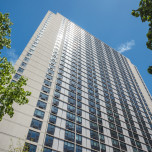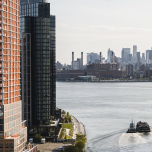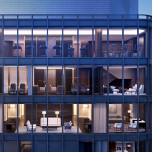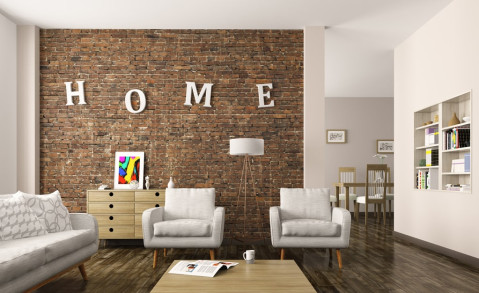
How To Buy An Apartment In New York City
Buying a New Construction Condo
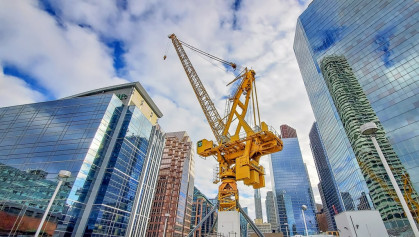
How to find a good developer
It's easy to be seduced by the obvious charms of a brand new condo--falling for sleek, modern architecture, floor to ceiling windows that make the most of light and views, and building amenities perfectly attuned to the needs of modern-day living versus, say, the needs of New Yorkers in 1926.
What's the secret to getting the best deal on a new condo?
"Knowing where a developer is in their construction and marketing cycles is the key to knowing the best time to negotiate," says Rachel Kelly of the SteerKelly Team at New York City real estate brokerage Keller Williams. "There are many items to negotiate beyond sales price that can save you tens of thousands of dollars. With our experience in new construction sales, we know where and when to press for the best terms." Connect with the SteerKelly team today and discover the difference we've made for our clients >>
Just don't confuse new with perfect. Construction defects ranging from minor to serious are not uncommon. They can cramp your quality of life for years and even interfere with your ability to sell until the issues are fixed.
The most frequent problems involve exterior leaks, windows that don’t work, defective wood floors, inferior substitutions of materials and appliances, missing fire proofing, heating and cooling system problems, and bad ventilation.
Complications ensue if the developer (also referred to as a 'sponsor') either doesn’t want to fix a project he doesn’t stand to make any more money on, or can’t afford to. Worst case translation: Two to three years of lawsuits, five- or even six-figure assessments, mild-to-severe inconvenience, and repair work that could wind up costing each owner tens of thousands of dollars.
While buyers of brand-new will never be able to eliminate the prospect of construction defects, the best hedge is to buy from a reputable developer—one who not only builds to a greater standard of care, but can afford to fix things that go wrong and wants to in order to preserve its reputation and be able to sell future projects.
So how do you find the good ones? A good real estate attorney (not one referred to you by the developer) should be able to steer you away from the worst and recite a list of the best.
You should also Google the name of the developer for discussions about problems in past projects. Remember that many developers create a new LLC for each project, so look in the development’s offering plan—a huge telephone-book-sized document that along with its amendments essentially explains everything about the building, from how many units have to sell in order for the sponsor to relinquish management of the building right down to the finish of the countertop in the powder room. Conduct your own due diligence online with this step-by-step guide to researching a developer’s past projects.
Tips for buying a ‘preconstruction’ condo
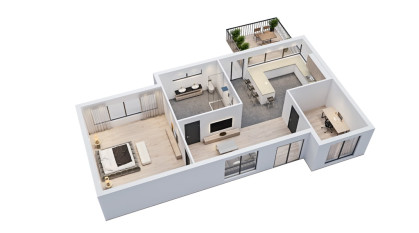
The main advantage of buying a condo before construction begins is taking advantage of what is typically lower early-bird pricing: Developers release units for sale in several batches, raising prices each time. The spread between the first group and the last is usually 5 to 20%.
Note, however, that while you may get a cheaper apartment if buy early, you won’t necessarily get a better one. Sponsors include a number of the most desirable units in each new batch of units and often save the best for last, when they expect to receive the highest price.
What's the secret to getting the best deal on a new condo?
"Knowing where a developer is in their construction and marketing cycles is the key to knowing the best time to negotiate," says Rachel Kelly of the SteerKelly Team at New York City real estate brokerage Keller Williams. "There are many items to negotiate beyond sales price that can save you tens of thousands of dollars. With our experience in new construction sales, we know where and when to press for the best terms." Connect with the SteerKelly team today and discover the difference we've made for our clients >>
Buying “pre construction” means relying on renderings, which may be deliberately distorted. The sponsor is only legally obligated to deliver what’s specified in the offering plan; the pretty pictures are irrelevant, and so is the model apartment.
Here's what to look for in a rendering:
- Views can be misleading: The view from your apartment may vary because it’s located in a different spot or because the building across the street was photoshopped out. Also check that the view from the roofdeck matches the rendering.
- That plasma tv above the fireplace looks nice, but is the electric and cable in that location and at a raised height, or will you have to rip out a wall to put it there? For that matter, is there actually a fireplace in your apartment?
- If the rendering shows moldings, are they included or upgrades? As far as those beautifully painted walls, understand that yours will be supplied white—maybe just a basecoat of white at that.
- Is the marble countertop standard or upgraded?
- Ceilings often seem higher than they actually are, perhaps because a soffit makes it seem that way in combination with a lot of modern, low-slung furniture.
- The clean, modern looking living room may neglect to show your heating and cooling paraphernalia – for example, the under-the-window PTAC unit.
- Decorative items in the kitchen will probably not be making an appearance in your apartment. Similarly, built-in shower niches may be an aftermarket extra or not available at all.
- Make sure the exterior of the building is depicted in its natural habitat and with the actual façade material, storefront and awning that will be in place when the building is completed.
- Amenities are frequently depicted, er, generously. Check the exact size and finishes of all spaces, including roofdeck, lobby, gym and pool. That six-lane Olympic swimming pool in the brochure may bear little resemblance the 1-2 lane lap pool described in the offering plan.
- The lobby might be rendered with a doorman or concierge…but it is the staff full-time or part time? Is the lobby furniture going to be supplied or will the condo board be expected to do that?
There are a host of other risks you should seek to minimize if you buy a preconstruction condo. For a deeper understanding and a checklist of questions you and your lawyer should get answers to, see How to Buy Preconstruction Smart.
How to negotiate with a developer
Unlike individual sellers, developers (also referred to as sponsors) generally tend to avoid outright price reductions. Price cuts affect future sales, as each unit’s recorded sale price is a matter of public record. So if the sponsor gives you $25,000 off, they will probably have to give every other buyer in that line $25,000 off.
Instead, focus on extracting “off-deed” concessions that the rest of the world will not automatically learn about. You'll find the most negotiability in troubled projects, at critical moments of a development's lifecycle (see below), and/or if you're paying all cash. "Off-deed" concessions include:
- 3-12 months of common charges paid in advance
- Payment of attorneys fees
- Upgrades to your unit like a better flooring (if not yet installed) or other finishes and appliances
- Roof rights, rooftop cabanas, storage bins, bike spaces, parking
- Payment of your contribution to the building’s reserve fund (“capital contribution”)
- Mortgage recording tax “splitter”: Not many buyers know about this, and it certainly pays to ask, as it can save you the entire amount of your mortgage recording tax (nearly 2% of your mortgage amount)
- An interest rate "buy-down"
- Furnishings, particularly when you're buying a model unit
In some cases, you may have more leverage at the beginning and end of a project. That’s because during the preconstruction phase, the sponsor will be focused on getting 15% of the units under contract. Fifteen percent is the magic number at which the offering plan is declared effective by the attorney general and closings can legally begin. It is also the minimum threshold at which most lenders will even consider financing sales in the building (some want to see as many as 50% of the units under contract).
If you're paying all cash in the preconstruction phase, you may have the most negotiating leverage of all as far as concessions, if not purchase price.
Conversely, you may have extra leverage at the very end of the project, when a sponsor may be eager to close down the sales office and focus fully on the next project.
Other points of negotiation:
- Deposit amount: Most sponsors ask for 10% down when you sign the contract, but in the preconstruction phase, when the sponsor is eager to hit the 15% mark described above—and is likely to be sitting on your deposit a very long time before delivering the unit—you may be able to negotiate a lower amount, such as 5%.
- Drop dead dates: Sponsors will never offer this up, but most will agree to a reasonable “drop dead” date at which point you are let out of the contract. For example, if you’re signing a contract in August and the sponsor predicts closings will start Oct. 1st when the building is predicted to be 25% sold, you can ask to be let out of the contract if closings are delayed 3-4 months past Oct. 1st.
Getting a mortgage to buy a brand new condo
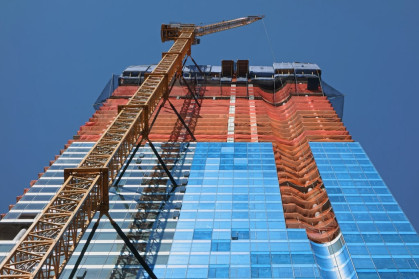
In the skittish modern credit climate, lenders look as closely at the building as at your financial history and income in deciding whether to give you a mortgage.
Building-wise, lenders require that anywhere from 15% to 50% of the apartments in the building must be in contract. The exact percentage is up to the lender, and so-called “preferred” lenders are typically at the lower end of this range. Preferred lenders, named in the offering plan, become intimately familiar with the development and don’t have to start from scratch as an outside lender might. This minimizes the possibility of the loan being denied because of issues with the building though it doesn't rule it out; the lender may decide at some point to put a cap on the number of units it is willing to finance, for instance.
Before issuing a mortgage to a buyer, lenders also require that the building have a Certificate of Occupancy or Temporary Certificate of Occupancy issued by the Department of Buildings.
Most lenders require that you put at least 10% down on your new condo; the average is around 10-20%. If your building is FHA-approved (more and more common in many emerging Brooklyn neighborhoods, for instance), you will only need to put 3.5% down.
Understanding property tax abatements

Though less common than in years past, some new buildings offer property tax abatements that range from 5 to 25 years, meaning that you will owe no property tax or only a specified fraction each year until the program expires and you rejoin the highly taxed herd.
A few points about abatements:
- Make sure you understand the phasing-in schedule: You may owe zero taxes for 10 years, then 25% of “normal” taxes in year 11, 50% in year 12 etc. A rapid phase-in can be a financial shock.
- Make sure you have a realistic sense of your actual tax burden once the abatement expires. Understand that the dizzyingly high number that the offering plan says will be your tax at the expiration of your abatement is based on current tax rates and assessed property values. Your actual number in 7, 14, or 25 years is likely to be much higher as tax rates and assessed values continue their inevitable climb.
- Don’t assume you are going to sell in Year 7 in the event your income can’t keep up with your taxes. Many of your neighbors may have the same idea—and the competition will make it harder to sell for the price you need.
- As a general rule of thumb, don’t spend up because you have an abatement: Buy the apartment you could afford if there were no abatement.




















